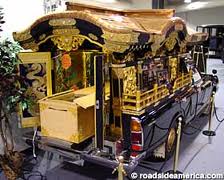This author was born in Minnesota in 1962. If you don’t understand
anything else about Minnesota
you must know that this State is known as the “Land of 10,000 lakes.” Around
those lakes are mountains, plush forests’, and lots of snow in the winter. It
can get down to 20 degrees below zero which makes Minnesotans’ rugged
environmental loving people. To get through those long cold winters families
had to share common interests to pass away many long hours by blazing fires
together. Our author’s parents did not own a television but they did own at
least 5000 books. Our author and her three younger siblings, Bridget, Noah, and
Micha would read such classics as Beowulf, Shakespeare, and Greek
plays. Even at a young age our author was interested in romance. Her long time
favorite was Romeo and Juliet. To entertain her younger brothers and
sister she would put on a puppet show, with lights and great flair. It just
turned out that all of her shows were romance stories. She finally convinced
her father to allow her to read one romance novel for every two classic books.
The romance novels were that of Georgette Heyer and to this day our author says
those books changed her life. The girl from Minnesota is Eloisa James. Her fictional backdrop for her novels are set
in England's Regency period (1811–1820), and James often has references
to Shakespeare or includes pieces of 16th-century poetry or other tidbits she
has researched all of her life and put into her romance novels. Her first works
were the Pleasure Trilogy. Book # 1 Enchanting Pleasures was published
by Dell. Yet, before the Ink had dried on book # 2 and # 3 of her trilogy
Random House picked them up and Eloisa never looked back.
Very
Recently Eloisa was interviewed in London
by the BBC radio. She however was not introduced as Eloisa James (that is her
pen name for her fiction) instead they were interviewing Dr. Mary Bly PhD. a
Shakespeare scholar with degrees from Oxford and Yale, and she is a associate
professor and head of the Creative Writing program at Fordham University in New
York City.
Mary’s Father is
Robert Bly the 1960’s poet and co-founder of the 1966 American Writers against
the Vietnam War. Robert Bly led much of the opposition among writers to that
war. When he won the National Book Award for his book The Light Around the
Body, Bly contributed his prize money to the Resistance. His books for the
“coming of age for men,” have been translated into several languages and remain
popular today. Mary’s Mother is the
Late Carol Bly. She was a teacher and an
award-winning American author. Mary’s Mother wrote short stories, essays, and
nonfiction works on “The Art of writing.” Carol Bly was an activist as well but
for Women. She featured Minnesota
women who made changes with empathy to moral crisis’s women were facing in her
day. Carol Bly’s body of work showed that changes could be made by women in
their community or in themselves.
If this were not enough literary force in Mary Bly’s life,
her godfather is the Pulitzer- Prize –winning poet James Wright.
One of the most fascination features of Dr.
Mary Bly’s life she discussed in her recent interview on the BBC radio in London. For several years Bly kept her fiction
writing and her identity as Eloisa James a secret from her fellow professors at
Fordham University. It was only after her first best selling New
York Times romance novel was published in 2005 that Bly decided to introduce
her alter ego to her colleagues during a faculty meeting at Fordham University.
They were shocked and pleased at the same time. Bly brought copies of her novel
to the faculty meeting for each of her fellow professors. This was quite a twist to the demanding world
of academia and the many books Mary Bly has written that has gained the respect
of her fellow professors. One such book is The Geography of Puns:
London’s Bawdy Whores, addresses “the geographical and linguistic
economies of early modern London.”
All of those long
winter nights in Minnesota
by the fire with her family helped shape the amazing genius, creativity and Witt
of Dr. Mary Bly and her alter ego Eloisa James.
“A stale mind is the devil's breadbox.”
“Dogs come when they're
called; cats take a message and get back to you.”
Mary
Bly
Jan Atchley Bevan,
Presidential Panache, NLAPW Jacksonville branch
Presidential Panache, NLAPW Jacksonville branch
.





